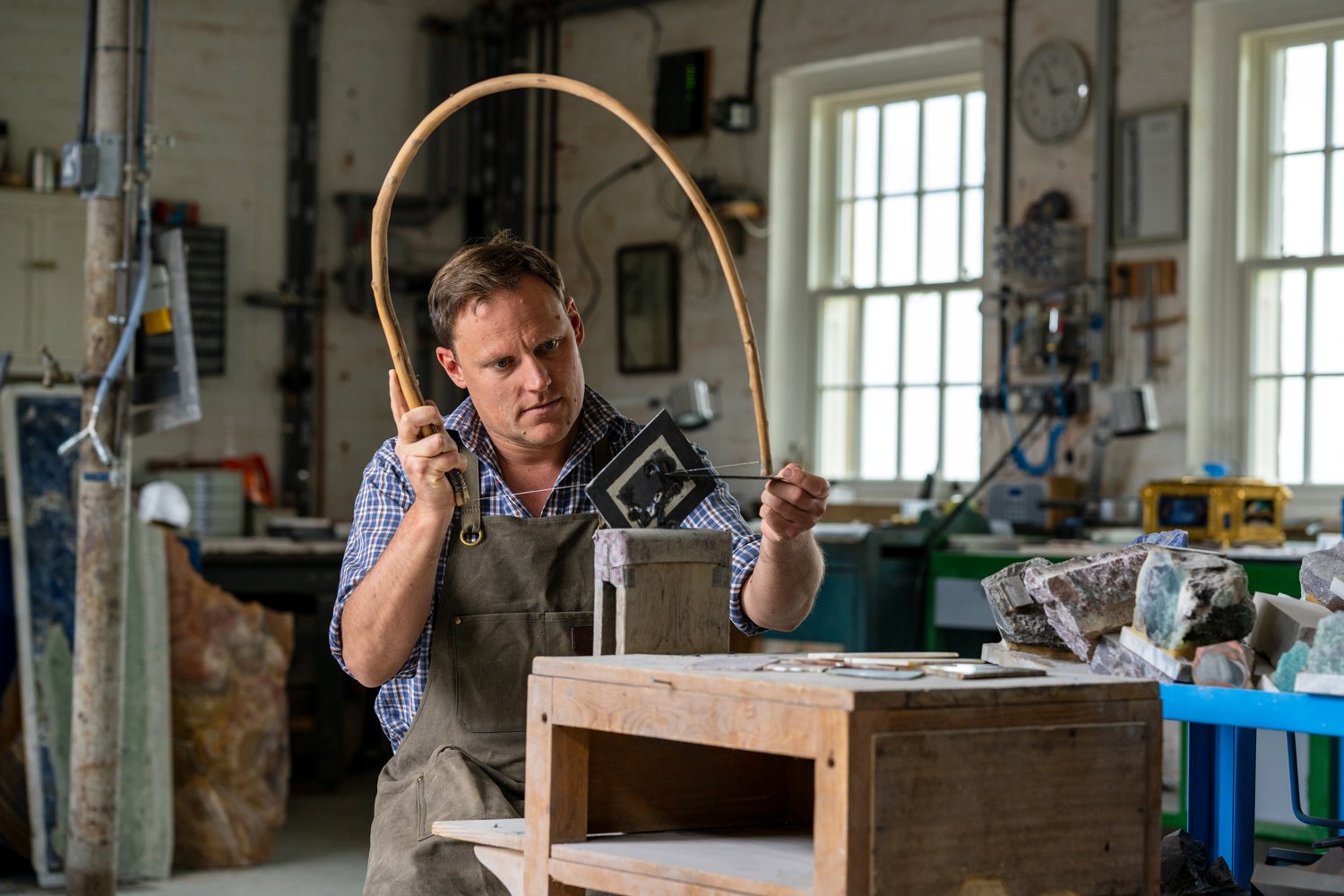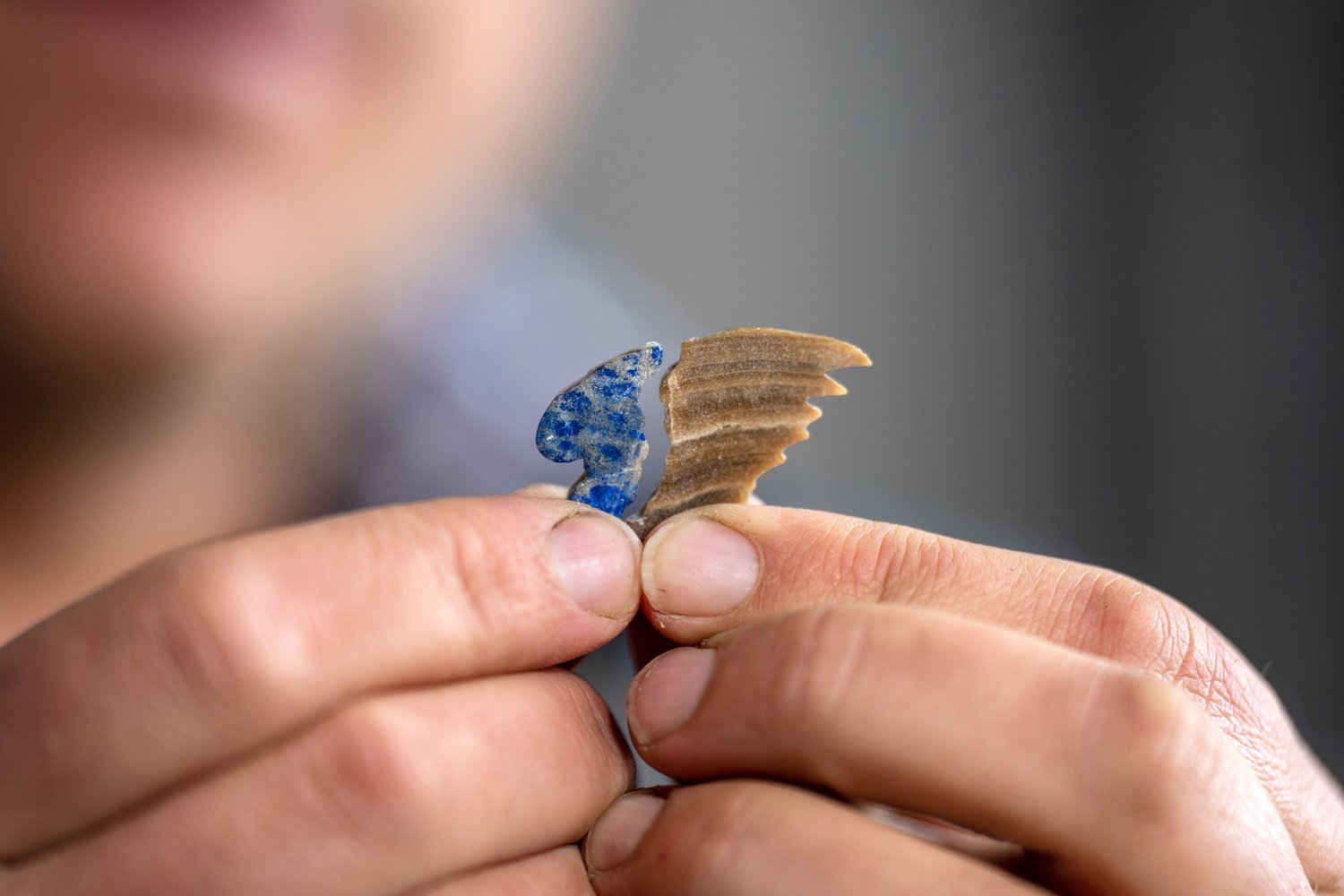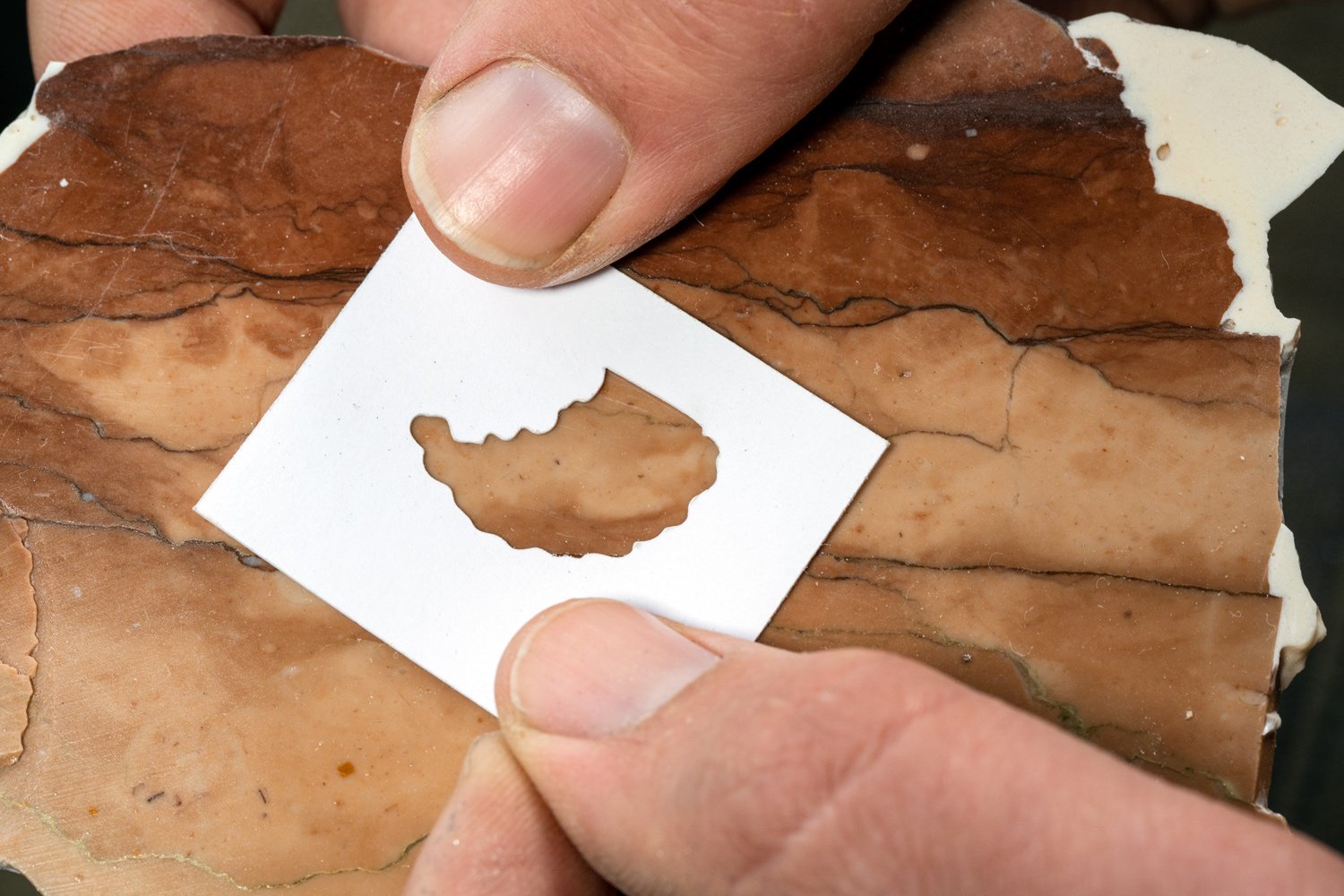About pietra dura
A piece of history
Pietra dura is a highly specialised art form requiring great care, skill and precision. It involves inlaying pieces of polished precious and semi-precious stones – and sometimes even shells – into a background marble, thus creating a ‘painting in stone’.
Translated from Italian as ‘hard stone,’ pietra dura can be traced back to the Ancient Romans, who developed the process for decorating walls and floors. Also known as Florentine mosaic, pietra dura thrived in Florence during the Renaissance period under the powerful Medici dynasty. By the 1700s, the demand for pietra dura artists spread across Europe, resulting in some of the finest luxury items of that time.
Today, Thomas uses the same techniques of the past, transforming stone into beautiful objects that can be treasured now – and long into the future.
“It is such a thrilling moment – to slice into a block of stone and see what you can create. A rich lapis lazuli becomes the body of a tree frog; a rare red and orange jasper lends itself perfectly to a koi carp’s intricate body, while the light-catching qualities of labradorite can suddenly suggest a pair of delicate dragonfly wings…”
– Thomas on finding the perfect stone.
A meticulous process
It all starts with the stone – knowing what colours, shading and textures will bring the image to life. Once the stones are selected, they’re sliced into a thickness of between 2 and 5mm. Paper templates are then made for each piece of stone needed for the design, and these are stuck onto the carefully selected area.
The pieces are then cut out of the stone with a traditional bow saw, accurately following the outline of the template. The bow saw – known as an archetto – is a bent stick of chestnut with a taut plain iron wire. Carborundum (silicon carbide) paste is applied to the wire while cutting.
The pieces are then filed by hand so they each fit together without any gaps between them. The jigsaw of pieces is assembled together using a natural ‘glue’, made in the studio from beeswax and pine resin, and backed with slate.
The work then has to be polished by hand using a hard Agate stone and gradually finer grades of carborundum, before being waxed and buffed to reveal the beauty of the final image.
“There is such joy in experiencing the whole development of the process – from picking up what seem to be unassuming natural stones from the earth, right through to the final polishing of the artwork. Seeing the pleasure that customers get at the end of this journey makes the countless production hours so worthwhile.”
– Thomas on the process of pietra dura









